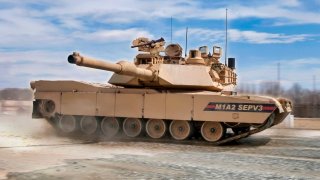The Russian Military Might Be 'Running Out of Steam' in Ukraine
The war in Ukraine, while appearing stalled, sees daily intense fighting along the contact line, with Russian forces pushing hard but achieving limited success. Kyiv’s forces are strategically conceding ground when necessary, inflicting heavy losses on Russian troops.
Summary and Key Points: The war in Ukraine, while appearing stalled, sees daily intense fighting along the contact line, with Russian forces pushing hard but achieving limited success. Kyiv’s forces are strategically conceding ground when necessary, inflicting heavy losses on Russian troops.

-The situation reveals the limitations of the Russian military, which has shifted to small, localized assaults instead of large-scale offensives, likely due to high casualties and material shortages.
-The Institute for the Study of War notes that these piecemeal attacks likely represent the extent of Russia’s current capabilities. Both sides remain committed to the conflict, with no operational breakthroughs in sight. Ukraine, facing its own attrition challenges, particularly in manpower, is preparing for a counteroffensive.
-The arrival of new Western weapons systems, including F-16 fighter jets, could provide a critical boost to Ukrainian forces, potentially enabling them to capitalize on Russia’s waning offensive capacity.
Russia Might Have a Problem
The war in Ukraine might look stalled, but there is daily fighting along the contact line, with the Russian forces pushing hard.
Kyiv’s forces are holding, conceding ground when it is strategically prudent to do so and exacting a heavy price from their adversaries.
The situation on the battlefield shows the limitations of the Russian military.
Running Out of Steam
“Russian forces conducted five platoon- to battalion-sized mechanized assaults in western Donetsk Oblast on July 29 and 30. Such localized mechanized pushes are likely the manifestation of Russia's forecasted summer offensive—Russian forces likely lack the wider operational capacity to mount a separate renewed offensive operation in Donetsk Oblast or elsewhere on the front this summer,” the Institute for the Study of War assessed in its latest operational update of the conflict.
It is clear that the Russian military command revised its strategy for the summer of 2024. Instead of seeking an operational breakthrough somewhere along the contact line, Russia has opted to fight small, localized battles in order to make limited gains and attrite Ukrainian forces. The Kremlin likely believes this approach will be more effective than a large-scale offensive operation.

However, there is another reading of the situation. The new approach may very well be due to the Russian military’s inability to do anything else, either because of the high manpower and material casualties, or because of a lack of sophistication among its planners in executing maneuver warfare.
“Periodic and pulsating Russian mechanized assaults likely represent the extent of Russia's current offensive capacity, and Russia is unlikely to mount a distinct new summer offensive operation due to material and manpower constraints,” the Institute for the Study of War added.
Without an operational breakthrough for either side, the fighting will go on until the cost becomes so high that negotiations are the only solution. At this time, Kyiv and Moscow continue to commit every resource to the conflict.
“The Russian military command's willingness to accept costly armored vehicle losses without conducting a large-scale, multi-directional offensive operation or making operationally significant advances in western Donetsk Oblast will likely burden the Russian military in the long-term,” the Institute for the Study of War stated.
Localized Russian offensives are not without cost to the Ukrainian forces. On the contrary, Ukrainian defenses feel pressured, and sometimes the Ukrainian military has to concede ground. Overall, Ukrainian forces feel attrition, particularly among men. The average age of a Ukrainian soldier on the frontline is between 40 to 45 years old, and the persistent fighting is taking a toll.
Kyiv will seek to take advantage of the waning offensive capabilities of the Russian military and strike hard once the time is ripe. The arrival of new Western weapons systems, including F-16 Fighting Falcon fighter jets, could help Ukrainian forces succeed where they failed before.
About the Author
Stavros Atlamazoglou is a seasoned defense journalist specializing in special operations and a Hellenic Army veteran (national service with the 575th Marine Battalion and Army HQ). He holds a BA from the Johns Hopkins University and an MA from the Johns Hopkins’ School of Advanced International Studies (SAIS). His work has been featured in Business Insider, Sandboxx, and SOFREP.
Image Credit: Creative Commons and/or Shutterstock.


